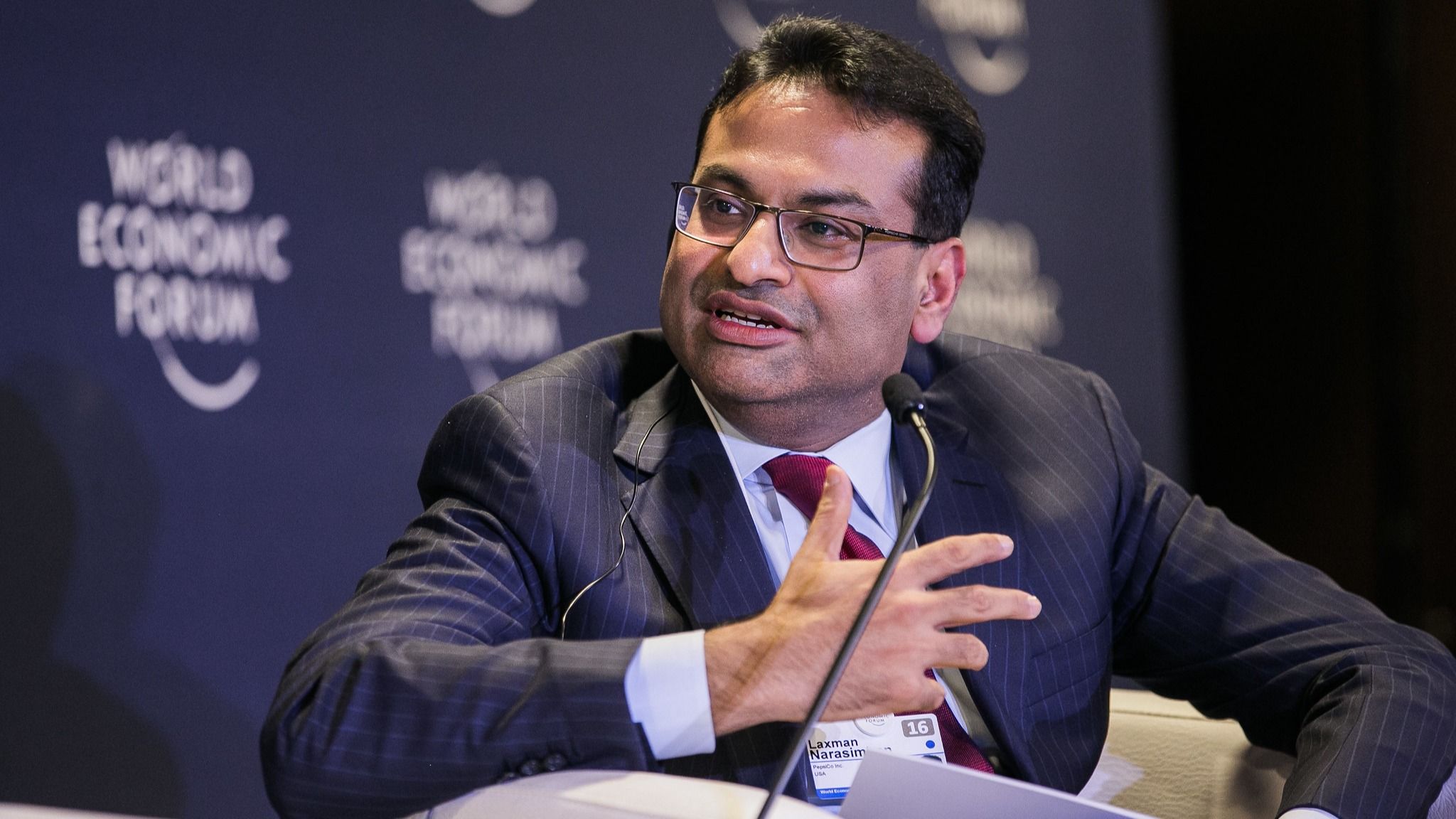Laxman Narasimhan’s Background and Career Trajectory: Starbucks Ceo Laxman Narasimhan

Laxman Narasimhan, the current CEO of Starbucks, boasts a diverse and impressive career trajectory spanning the consumer goods and global market sectors. His journey to the helm of this coffee giant is marked by a series of leadership roles at prominent multinational corporations, where he honed his strategic acumen and built a reputation for driving growth and innovation.
Previous Leadership Positions and Accomplishments, Starbucks ceo laxman narasimhan
Narasimhan’s career path reveals a consistent pattern of tackling complex challenges and delivering tangible results. He has held senior leadership positions at two major multinational corporations, PepsiCo and Reckitt Benckiser, where he demonstrated his expertise in managing large-scale operations, fostering innovation, and navigating global markets.
PepsiCo
Narasimhan’s tenure at PepsiCo, spanning from 2012 to 2019, was marked by a series of key roles that allowed him to gain valuable experience in the fast-moving consumer goods (FMCG) industry. He started as the Chief Executive Officer (CEO) of PepsiCo’s Latin America division, a role that exposed him to the intricacies of managing a diverse and geographically expansive business. During his time in Latin America, he spearheaded a strategic restructuring of the division, which resulted in significant improvements in operational efficiency and financial performance.
Narasimhan’s contributions were recognized with a promotion to Global Chief Commercial Officer in 2017. In this role, he oversaw the company’s global sales and marketing efforts, driving growth and innovation across a portfolio of iconic brands. His leadership in this role was instrumental in driving PepsiCo’s global expansion and solidifying its position as a leading FMCG player.
Reckitt Benckiser
After PepsiCo, Narasimhan joined Reckitt Benckiser, a global consumer goods giant known for its brands like Lysol, Durex, and Dettol. He served as CEO of Reckitt Benckiser from 2019 to 2022, during which time he led the company through a period of significant transformation. His focus on innovation, digital transformation, and sustainability helped drive growth and enhance the company’s competitive position in the global consumer goods market.
Expertise in Consumer Goods and Global Market Understanding
Narasimhan’s career journey has equipped him with a deep understanding of the consumer goods industry and the intricacies of navigating global markets. He has a proven track record of identifying growth opportunities, developing innovative strategies, and executing them effectively in diverse cultural and economic contexts. His expertise in consumer insights, brand building, and market dynamics is further complemented by his strong financial acumen and ability to lead large, complex organizations.
Narasimhan’s experience in managing global teams, navigating cultural differences, and adapting to diverse market conditions has positioned him well to lead Starbucks, a company with a global presence and a strong commitment to local market adaptation. His understanding of consumer preferences, market trends, and the competitive landscape is invaluable as he navigates the challenges and opportunities facing the coffee giant.
Starbucks Under Narasimhan’s Leadership

Laxman Narasimhan, the new CEO of Starbucks, brought a fresh perspective and a clear vision for the company’s future. His leadership has been marked by a focus on innovation, customer experience, and sustainability, all aimed at strengthening Starbucks’ position as a global coffee giant.
Initial Strategies and Vision
Narasimhan’s initial strategies focused on revitalizing Starbucks’ core business, enhancing customer experience, and expanding globally. He envisioned a future where Starbucks would be a leading innovator in the coffee industry, offering a seamless and personalized experience to its customers. His vision also emphasized sustainability, ensuring that Starbucks operates responsibly and ethically in all aspects of its business.
Key Areas of Focus
Narasimhan’s leadership has been characterized by a strong focus on three key areas:
Innovation
Narasimhan believes that innovation is crucial for Starbucks’ long-term success. He has invested heavily in research and development, focusing on new product offerings, enhanced technology, and innovative store formats.
- New Product Offerings: Starbucks has introduced a variety of new products under Narasimhan’s leadership, including plant-based options, cold brew variations, and unique seasonal beverages. These innovations cater to evolving customer preferences and preferences, ensuring Starbucks remains relevant in the competitive coffee market.
- Enhanced Technology: Starbucks has embraced technology to enhance the customer experience. This includes mobile ordering, personalized recommendations, and seamless payment options. The company has also invested in digital platforms and loyalty programs to deepen customer engagement and build stronger relationships.
- Innovative Store Formats: Narasimhan has introduced new store formats, including smaller, more efficient locations, and drive-thru-only outlets. These innovations cater to changing consumer habits and preferences, optimizing operations and expanding reach.
Customer Experience
Narasimhan is committed to providing an exceptional customer experience. He believes that every interaction with Starbucks should be memorable and personalized.
- Personalized Service: Starbucks has implemented training programs to empower its baristas to provide personalized service. This includes learning about customer preferences, offering tailored recommendations, and creating a welcoming and engaging atmosphere.
- Digital Engagement: Starbucks has leveraged technology to create a more personalized and engaging customer experience. The Starbucks app allows customers to order ahead, customize their drinks, and earn rewards. This digital engagement has fostered stronger customer relationships and increased loyalty.
- Store Atmosphere: Narasimhan has emphasized the importance of creating a welcoming and comfortable store atmosphere. This includes focusing on design, ambiance, and providing a sense of community within each store.
Sustainability
Narasimhan recognizes the importance of sustainability in today’s world. He has committed Starbucks to operating responsibly and ethically in all aspects of its business.
- Ethical Sourcing: Starbucks has implemented strict ethical sourcing practices for its coffee beans. This ensures that coffee farmers are paid fair prices and that coffee is grown sustainably. Starbucks has also partnered with organizations that promote fair trade and sustainable agriculture.
- Environmental Stewardship: Starbucks has committed to reducing its environmental footprint. This includes initiatives to reduce waste, conserve energy, and promote sustainable packaging. Starbucks has also invested in renewable energy sources and sustainable building practices.
- Community Engagement: Starbucks is committed to being a responsible corporate citizen. This includes supporting local communities through initiatives that promote education, economic development, and social justice.
Early Impacts of Narasimhan’s Leadership
Narasimhan’s leadership has already had a positive impact on Starbucks’ performance and market position. The company has seen increased revenue and profitability, driven by innovation, enhanced customer experience, and a commitment to sustainability. Starbucks has also strengthened its brand image and reputation, positioning itself as a leader in the coffee industry.
Challenges and Opportunities for Starbucks

Starbucks, like any other large corporation, faces a multitude of challenges in today’s dynamic market landscape. These challenges range from fierce competition to evolving consumer preferences and economic pressures. However, these challenges also present opportunities for growth and expansion, especially under Narasimhan’s leadership.
Competition in the Coffee Market
The coffee market is highly competitive, with numerous players vying for customer loyalty. Starbucks faces competition from established chains like Dunkin’ Donuts and McDonald’s, as well as independent coffee shops and specialty roasters. This fierce competition necessitates continuous innovation and differentiation to maintain market share.
Changing Consumer Preferences
Consumer preferences are constantly evolving, driven by factors such as health consciousness, sustainability, and personalized experiences. Starbucks needs to adapt to these changing preferences by offering healthier options, promoting sustainable practices, and providing personalized services. For instance, Starbucks has introduced plant-based milk alternatives and reduced its environmental footprint.
Economic Pressures
Starbucks operates in a global economy, subject to fluctuations in currency exchange rates, inflation, and commodity prices. These economic pressures can impact pricing, profitability, and overall growth. To mitigate these pressures, Starbucks can optimize its supply chain, explore cost-saving measures, and adjust pricing strategies.
Opportunities for Growth and Expansion
Despite the challenges, Starbucks has numerous opportunities for growth and expansion. The company can leverage its brand recognition and global presence to expand into new markets, particularly in emerging economies. Starbucks can also focus on expanding its digital presence, offering innovative mobile ordering and delivery services.
Strategic Direction Under Narasimhan
Narasimhan’s strategic direction for Starbucks emphasizes digital transformation, innovation, and a focus on customer experience. He aims to enhance Starbucks’ digital capabilities, introduce new products and services, and personalize the customer experience. This strategic direction aligns with the evolving consumer preferences and competitive landscape.
Comparison with Previous CEO Leadership
Narasimhan’s strategic direction differs from previous CEO leadership in its emphasis on digital transformation and innovation. While previous CEOs focused on expanding Starbucks’ physical presence and product offerings, Narasimhan emphasizes a more digital-centric approach. This shift reflects the evolving consumer landscape and the need to adapt to a more digitally connected world.
Starbucks ceo laxman narasimhan – Laxman Narasimhan, the new CEO of Starbucks, inherits a company facing a perfect storm of challenges. From rising labor costs and supply chain disruptions to the growing popularity of independent coffee shops, the pressure is on for him to deliver.
The question remains whether he can successfully navigate these turbulent waters and continue the legacy of the ceo starbucks brand, or if he will be just another cog in the corporate machine. Only time will tell if Narasimhan can truly revitalize Starbucks and restore its once-unwavering dominance in the coffee market.
Laxman Narasimhan, Starbucks’ new CEO, inherits a company already grappling with labor issues and a shifting consumer landscape. While he may be focused on addressing these internal challenges, he’d do well to look at the trajectory of his predecessor, Starbucks CEO Brian Niccol , who, despite his efforts to modernize the brand, ultimately failed to address the fundamental issues that continue to plague the company.
Narasimhan’s success will depend on his ability to navigate these challenges, and it remains to be seen if he can achieve a more lasting impact than his predecessor.